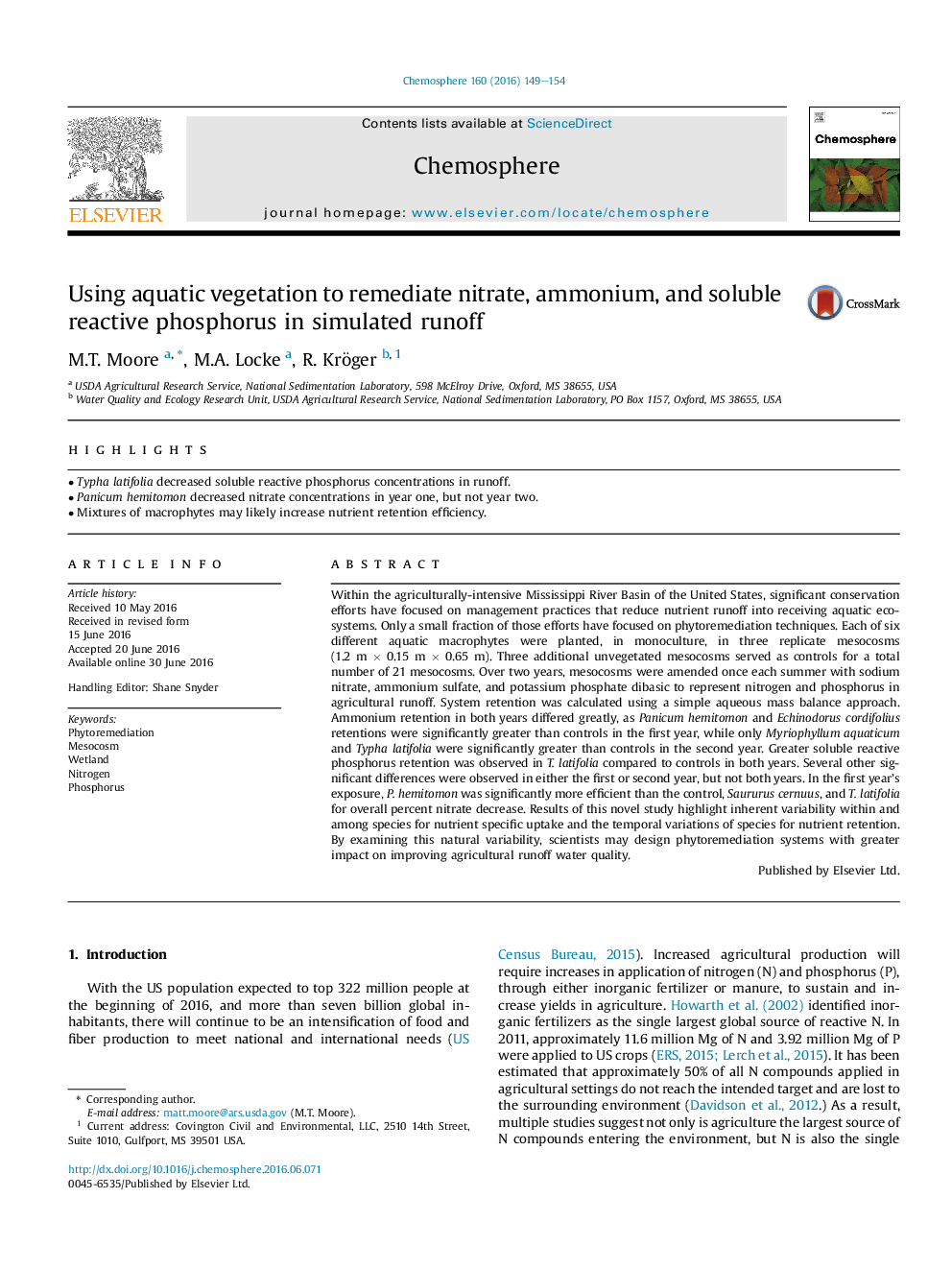| Article ID | Journal | Published Year | Pages | File Type |
|---|---|---|---|---|
| 4407393 | Chemosphere | 2016 | 6 Pages |
•Typha latifolia decreased soluble reactive phosphorus concentrations in runoff.•Panicum hemitomon decreased nitrate concentrations in year one, but not year two.•Mixtures of macrophytes may likely increase nutrient retention efficiency.
Within the agriculturally-intensive Mississippi River Basin of the United States, significant conservation efforts have focused on management practices that reduce nutrient runoff into receiving aquatic ecosystems. Only a small fraction of those efforts have focused on phytoremediation techniques. Each of six different aquatic macrophytes were planted, in monoculture, in three replicate mesocosms (1.2 m × 0.15 m × 0.65 m). Three additional unvegetated mesocosms served as controls for a total number of 21 mesocosms. Over two years, mesocosms were amended once each summer with sodium nitrate, ammonium sulfate, and potassium phosphate dibasic to represent nitrogen and phosphorus in agricultural runoff. System retention was calculated using a simple aqueous mass balance approach. Ammonium retention in both years differed greatly, as Panicum hemitomon and Echinodorus cordifolius retentions were significantly greater than controls in the first year, while only Myriophyllum aquaticum and Typha latifolia were significantly greater than controls in the second year. Greater soluble reactive phosphorus retention was observed in T. latifolia compared to controls in both years. Several other significant differences were observed in either the first or second year, but not both years. In the first year’s exposure, P. hemitomon was significantly more efficient than the control, Saururus cernuus, and T. latifolia for overall percent nitrate decrease. Results of this novel study highlight inherent variability within and among species for nutrient specific uptake and the temporal variations of species for nutrient retention. By examining this natural variability, scientists may design phytoremediation systems with greater impact on improving agricultural runoff water quality.
